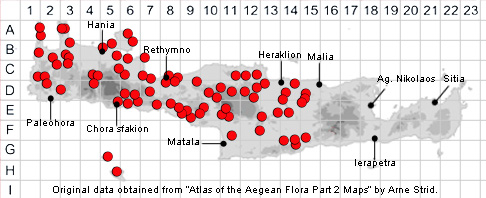SPECIES DESCRIPTION
PHLOMIS FRUTICOSA
Family and Genus:- See- LABIATAE
Common Names:- Jerusalem sage
Homotypic Synonyms:- Phlomis collina.
Meaning:- Phlomis (Gr) Flame, (the hairy leaves were used as lamp wicks).
Fruticosa (L) Of shrub-like habit.
General description:- Bushy shrub.
Stem:-
1) Generally 70-130 cm tall, eglandular.
Leaves:-
1) Lower, 3-9 cm, elliptical, lanceolate or lanceolate-ovate, truncate or cuneate at
base, entire or crenulate, coriaceous, shortly stellate-tomentose above, white-
stellate-tomentose beneath.
2) Petiole, up to 4 cm.
Flowers:-
1) Floral leaves, sessile or petiolate, mostly lanceolate, obtuse.
2) Verticillasters, (6-)14- to 36-flowered.
3) Bracteoles, 10-20 x (2-)3-7 mm, obovate, ovate-lanceolate, oblanceolate or
elliptical, acuminate, straight at apex, stellate-tomentose, ciliate or not, with
hairs 2-3 mm.
4) Calyx, 10-19 mm, stellate-lanate, not ciliate;
a) teeth, 1-3·5(-4) mm, subulate.
5) Corolla, 23-35 mm, yellow.
Fruit:-
1) Nutlets, glabrous or pubescent, often pilose at the apex.
Key features:-
1) Leaf blade, truncate or broadly cuneate at the base.
2) Bracteoles and calyces, with a mixture of glandular and eglandular hairs.
Habitat:- Open dry shrubby vegetation and open woodland on dry, stony slopes,
often gregarious in burnt or overgrazed areas. 0-800(-1200) m.
Distribution:- Mainland Greece, Sardinia and Italy eastwards, On Crete mainly
Central and west.
Flowering time:- Late Mar to early June
Photos by:- Fotis Samaritakis
